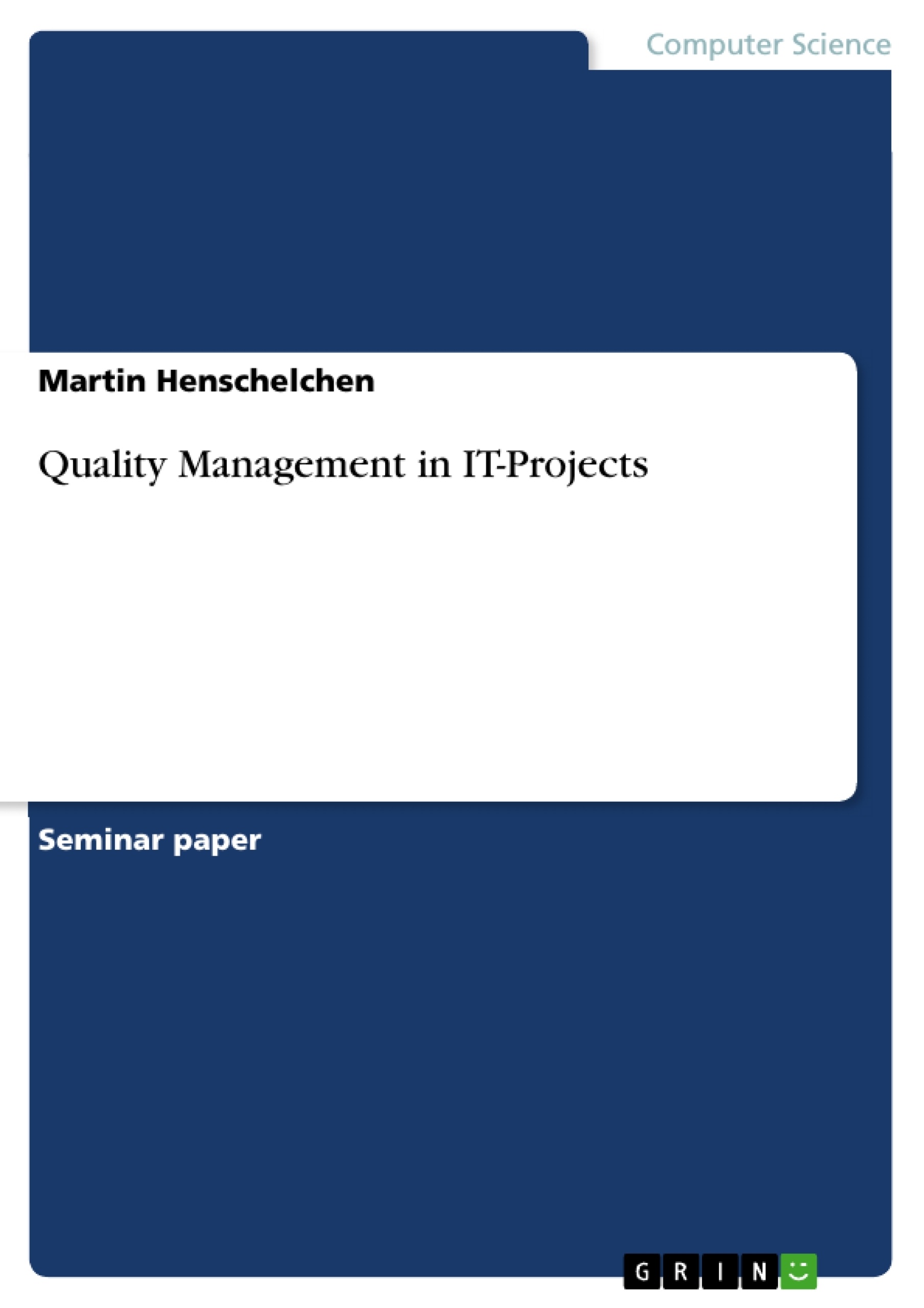To map modern business processes in IT systems, increasingly complex software solutions and interfaces are required. When developing these, specific quality requirements must be met. Without an adequate and suitable quality management, problems can arise during the development; for example, if changes are made in the day-to-day business during a project, these often also impact the goals and technical requirements. If test specifications are missing, no overview of the required test cases is possible. If test cases from previous versions are not available as regression tests, the adaptations of the existing software are not or only insufficiently tested. Later software failures or faulty data processing can cause high damages due to production downtimes, damage to reputation and demotivated employees. Poorly or untested software and projects in which requirements are only inadequately met can lead to cost overruns and missed deadlines and thus jeopardise the company's success
Unfortunately, while regular projects can be clearly circumscribed, planned and executed, and the requirements are mostly determined from the beginning, this does not seem to apply to IT developments. IT projects are not an end in themselves but serve specific business units to fulfil their tasks. Often, certain activities shall be carried out more efficiently through IT-supported processes, or additional outputs will be generated to benefit the company. The concerns here can be manifold. However, it is often essential that at least two areas communicate with each other that have little understanding for each other. In practice, it often looks like the business department tries to explain to the IT department what is needed without naming specific IT attributes. On the other hand, the IT employee tries to translate the described wishes and programme them. Unfortunately, the IT employee often lacks the technical knowledge of the subject and doesn’t know which data should be linked with each other or which algorithms describe the process best.
Inhaltsverzeichnis (Table of Contents)
- Introduction
- Quality Management in IT-Projects
- Quality Challenges in Software Development
- Causes of Quality Issues in IT Development
- Recommendations to improve Quality in I.T.
- Software Development Process with QM Elements
- Summary
- References
Zielsetzung und Themenschwerpunkte (Objectives and Key Themes)
This report aims to explore the challenges and complexities of quality management in IT projects. It investigates the reasons why traditional quality management approaches often fall short in agile software development environments. The report also provides recommendations for improving quality in IT projects by highlighting the crucial role of clear communication, comprehensive requirements management, and the adoption of agile methodologies that incorporate quality assurance principles.
- Challenges of Quality Management in Agile Software Development
- Causes of Quality Issues in IT Projects
- Recommendations for Improving Quality in IT Projects
- Integration of Quality Management Elements in Software Development Processes
- Impact of Unclear Project Definitions and Changing Requirements
Zusammenfassung der Kapitel (Chapter Summaries)
- Introduction: This chapter introduces the challenges of managing quality in IT projects, highlighting the complexities arising from evolving business requirements and the need for efficient software solutions. It emphasizes the critical need for effective quality management to avoid project failures, cost overruns, and reputational damage.
- Quality Management in IT-Projects: This chapter delves into the inherent challenges of managing quality in software development, particularly within the context of agile project methodologies. It contrasts the strengths and limitations of classical quality management with the demands of agile development, outlining the need for a more flexible and adaptable approach to quality assurance.
- Quality Challenges in Software Development: This chapter explores the specific challenges that arise in software development, focusing on the impact of unclear project definitions, changing requirements, and the use of immature technologies. It examines the factors that contribute to quality issues and the need for effective communication and collaborative efforts between business and IT teams.
- Causes of Quality Issues in IT Development: This chapter delves deeper into the root causes of quality problems in software development. It explores the role of inadequate requirements management, the difficulties associated with integrating new technologies, and the complexities of managing communication within large teams. The importance of careful planning, risk assessment, and robust communication channels are emphasized.
- Recommendations to improve Quality in I.T.: This chapter provides practical recommendations for improving quality in IT projects. It highlights the need for structured processes, effective change management, and clear communication to mitigate project risks and ensure successful outcomes. The importance of proactive measures, thorough planning, and adherence to established quality standards is emphasized.
Schlüsselwörter (Keywords)
This report focuses on the key concepts of quality management in IT projects, exploring the challenges of balancing agile development methodologies with traditional quality assurance practices. The report investigates the causes of quality issues, highlighting the importance of effective requirements management, communication, and collaboration. Key themes include agile project management, quality assurance, software development, requirements management, communication, and risk mitigation. This report offers practical recommendations for improving quality in IT projects by incorporating elements of both classical and agile approaches.
- Quote paper
- Martin Henschelchen (Author), 2022, Quality Management in IT-Projects, Munich, GRIN Verlag, https://www.hausarbeiten.de/document/1250259


